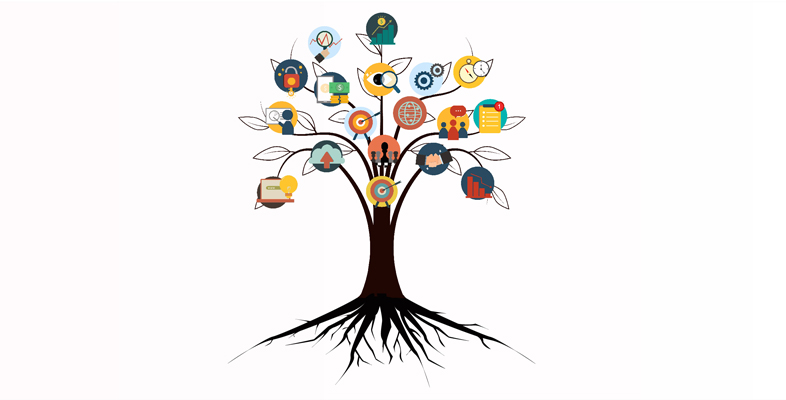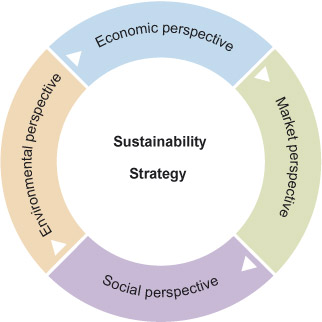2.3 Developing next-practice sustainability strategy
Next practices, those practices that only exist in our imagination, can change existing paradigms. To develop innovations that lead to next practices, entrepreneurs and innovators must question the implicit assumptions behind current practices. This is exactly what led to today’s industrial and services economy.
Can we create a carriage that moves without horses pulling it? Can we fly like birds? Can we dive like whales? These questions will once have been asked. By questioning the status quo, people and companies have changed it. In like vein, questions must be asked about scarce resources: can we develop waterless detergents? Can we breed rice that grows without water? Can biodegradable packaging help seed the earth with plants and trees? Sustainability can lead to interesting next-practice platforms.
Successful business models include novel ways of capturing revenues and delivering services in tandem with other companies. Developing a new business model requires exploring alternatives to current ways of doing business as well as understanding how companies can meet customers’ needs differently. Entrepreneurs and managers are learning to question existing models and to act to develop new delivery mechanisms.
As companies become more adept at this, the experience will lead them to the final stage of sustainable innovation, where the impact of a new product or process extends beyond a single market. You will now consider how to develop your next-practice sustainability strategy in Activity 6
Activity 6 Creating a next-practice platform
Listen to the following audio in which Richard Goodhead explains how Rolls Royce connect societal challenges to sustainable innovation. You will notice that it is an extended version of part of the audio which you first listened to in Activity 4. Then answer the following questions on next-practice.
Transcript
1. Create a next-practice platform for using the sustainable strategy diagram in Figure 2. For this, draw a blank diagram that has a shape similar to Figure 2 with clearly marked sections for economic, market, social and environmental sustainability. Next identify information from the audio about Rolls Royce which reflects each of these four components of sustainability to complete your figure. While this does not give you a definitive sustainable strategy of Rolls Royce, it provides an illustration of the types of information that constitute the sustainable strategy of an enterprise.
2. Select an organisation of your choice and repeat the task in Question 1. This could be your own organisation (if you own one), the organisation you work for or one that you may have studied in other contexts.
Feedback
You will have written about your own specific example but one constant to bear in mind is that sustainability can lead to interesting next-practice platforms. One example written about in hbr.org [Tip: hold Ctrl and click a link to open it in a new tab. (Hide tip)] as far back as 2009, but which is only recently emerging, is at the intersection of the internet and energy management. It is called the smart grid – it uses digital technology to manage power generation, transmission and distribution from all types of sources along with consumer demand, with the aim of lowering costs as well as more efficient energy usage.
The concept has been around for years and the huge investments so far have recently made it a reality. The grid allows companies to optimise the energy use of computers, network devices, machinery, telephones and building equipment, through meters, sensors and applications. It also enables the development of cross-industry platforms to manage the energy needs of cities, companies, buildings and households. Technology vendors such as Cisco, HP, Dell and IBM have invested to develop these platforms, as have utilities like Duke Energy, SoCal Edison and Florida Power & Light.
Now complete Activity 7.
Activity 7 Societal impacts of sustainable innovations
a.
access to job opportunities
b.
access to a community-based energy enterprise
c.
access to care and health services
d.
access to safe housing
e.
all of the above
The correct answer is e.
a.
by improving access to safe and healthy food in areas with high rates of malnutrition
b.
by improving access to finance for otherwise marginalised entrepreneurs
c.
by increasing the share of profits distributed to shareholders overseas
d.
by influencing consumer behaviour to increase profits
e.
by improving stakeholder inclusion in the governance of the enterprise
The correct answers are a, b and e.
a.
decreasing income inequality
b.
young people criminality
c.
ageing of population and care
d.
environmental degradation
e.
more public parks
The correct answers are b, c and d.
a.
economic perspective
b.
market perspective
c.
social perspective
d.
legal perspective
e.
environment perspective
The correct answers are a, b, c and e.
a.
hydrogen-powered vehicle
b.
wood burner
c.
a community-owned hydroelectric scheme
d.
a biodegradable plastic
The correct answers are a and c.
You will now look at how you can measure and evaluate the impact of sustainable innovation.

